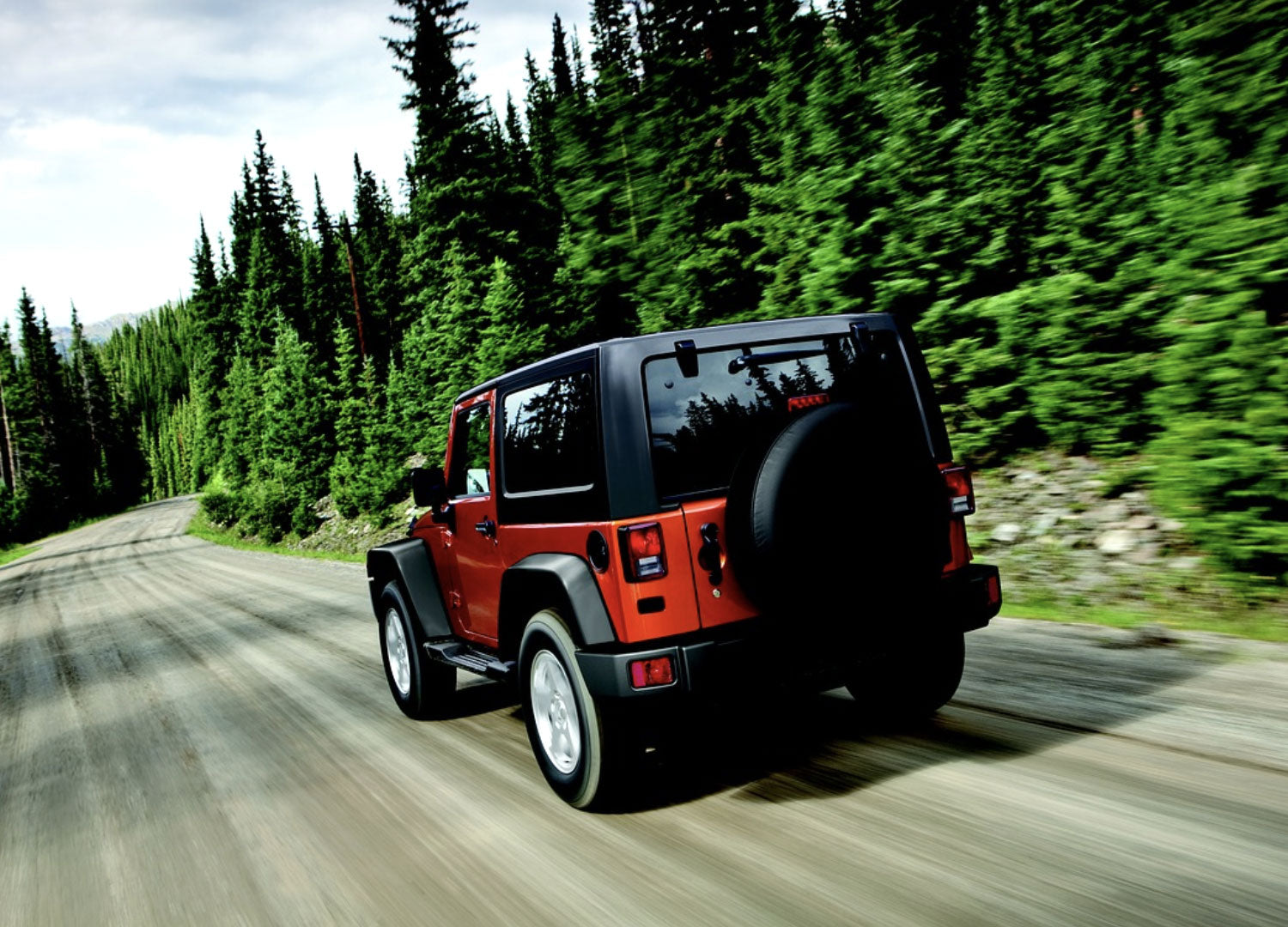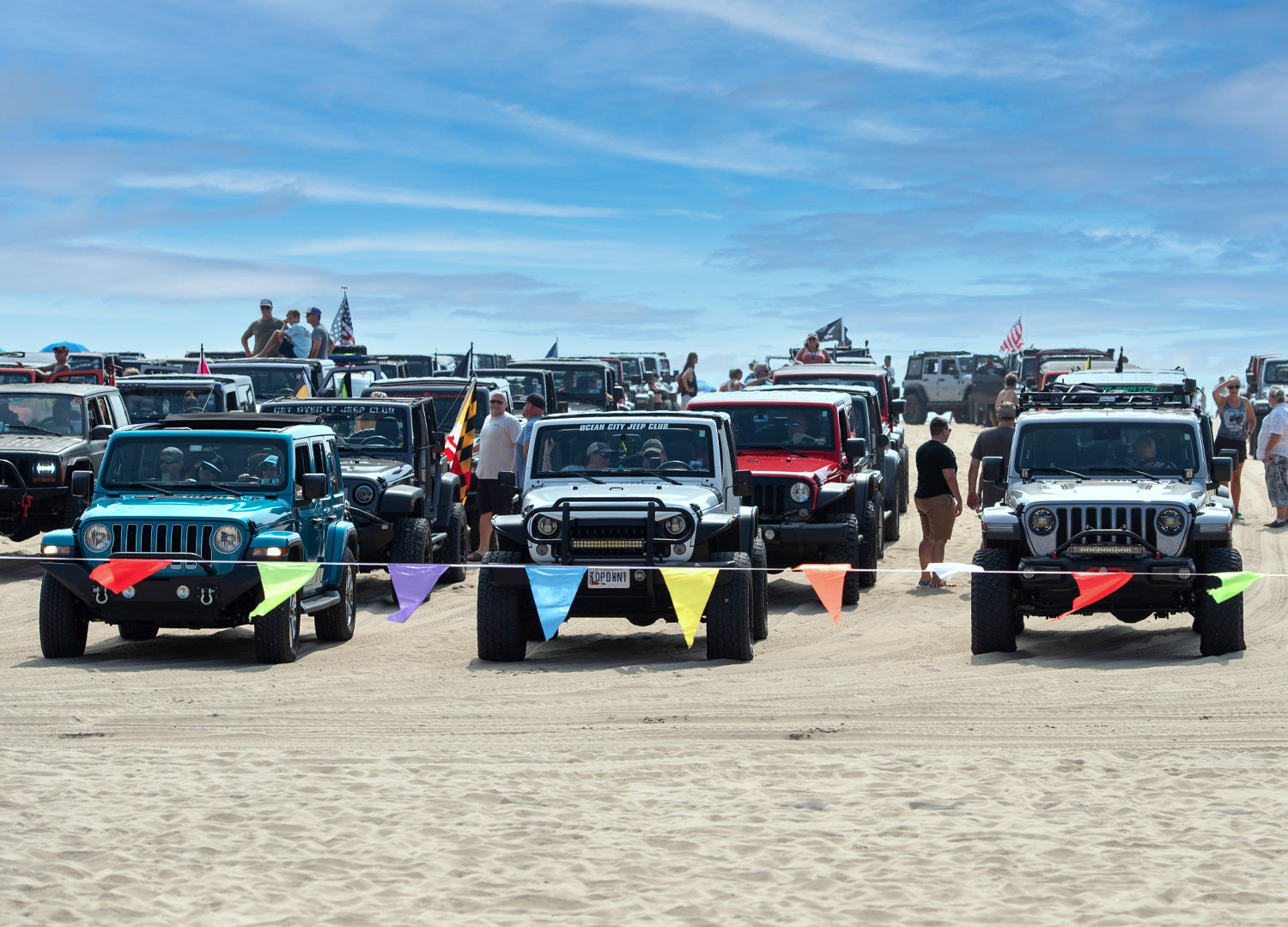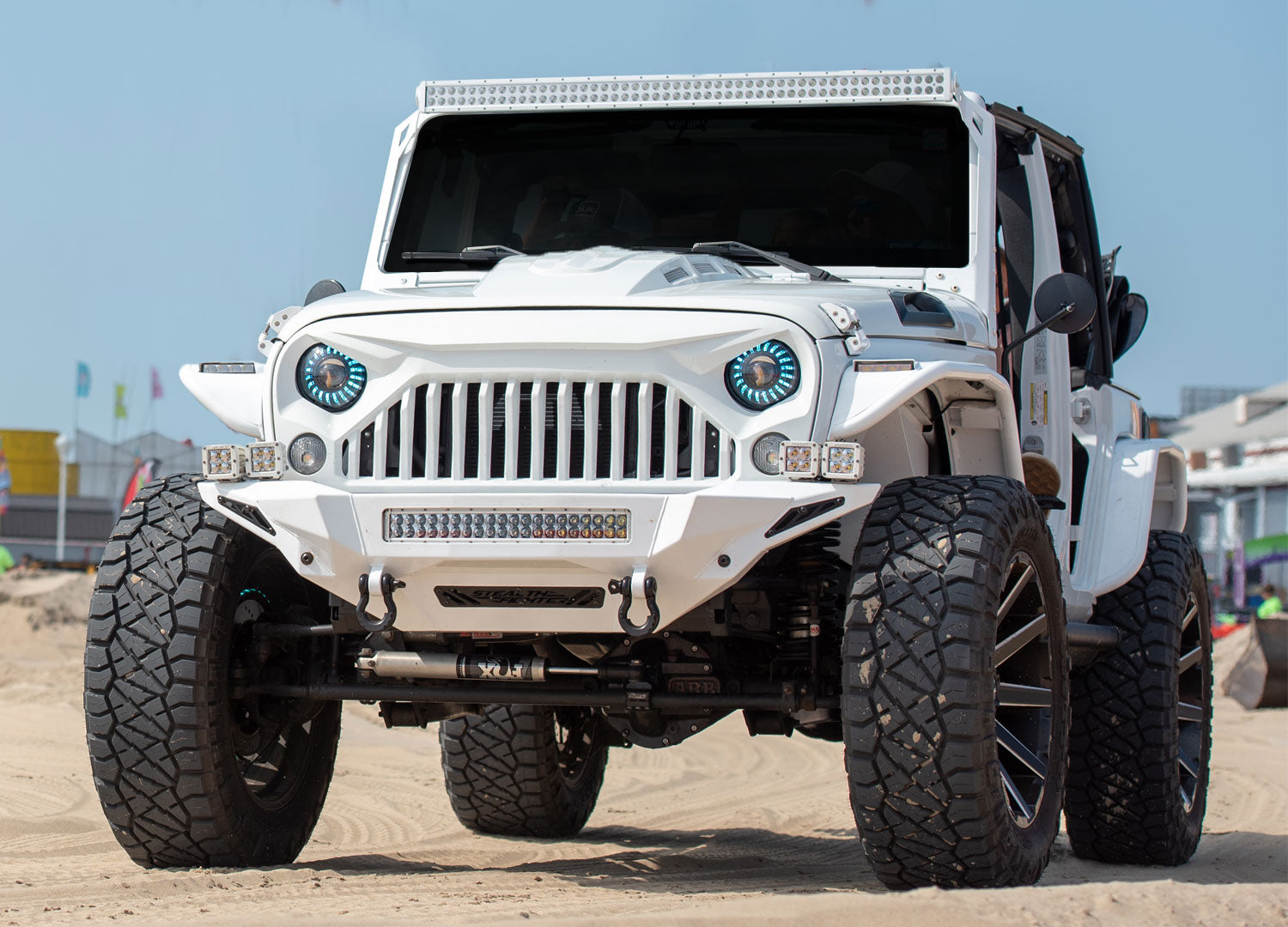Quick Answers on Jeep Wrangler Gas Usage

What Is Gas Mileage?
Gas Mileage is the number of miles a vehicle can travel using a particular amount of fuel. We measure it in Mileage Per Gallon (MPG), which is the distance a vehicle can travel per gallon of fuel. The higher a vehicle’s MPG, the more fuel efficient it is, and the less it costs you to drive. The U.S. Environmental Protection Agency (EPA) divides MPG into the following categories: Highway MPG (average miles on the open highway at higher speeds), City MPG (average miles in start-stop city traffic), and EPA Combined City/Hwy (which averages Highway and City ratings). The EPA also tracks electric and hybrid vehicle energy use and calculates equivalent MPG, allowing you to compare different vehicles with different fuel types.
What is the Jeep Wrangler’s average gas mileage?
For an off-road driving SUV, the Jeep Wrangler gets relatively impressive gas mileage. According to www.fueleconomy.gov, the four-door, automatic Jeep Wrangler Unlimited Sport gets 19 MPG city, 24 MPG highway, and 21 MPG combined. This is with a 3.6 liter V6 engine that comes with 285 horsepower, 260 lb-feet of torque and automatic stop/start. You can improve your gas mileage for not much more money by upgrading to an eTorque mild-hybrid system. If you go with a two-door Wrangler, you’ll do one MPG better in city driving. You can also opt for a 2.0L turbocharged four-cylinder engine and eight-speed automatic transmission that would get you to 22 MPG combined. If you do a lot of highway driving, you can upgrade to the 3.0-liter turbodiesel V6 that has the engine specs of 260 horsepower, 442 lb-ft of torque, and automatic transmission for 22/29/25 MPG.
The most fuel-efficient Wrangler is the 4xe, Jeep’s first plug-in hybrid, with a 21-mile all-electric range and 49 MPGe (miles per gallon equivalent). The worst is the Rubicon 392, with its muscly 6.4-liter V8 engine with 470 horsepower and 470 lb-ft of torque. This off-roading beast is rated at 13 MPG city, 17 MPG highway, and 14 MPG combined.
The Wrangler’s ratings might seem unimpressive until you consider its SUV competition. The new Ford Bronco Four-Door Outer Banks ranks at 21/20/22 MPG, the 2021 Chevy Blazer at 22/29/25 MPG, and the 2021 Four Runner at 16/19/17 MPG. So, while not the most fuel efficient of the bunch, the Jeep Wrangler performs well no matter what the model (except maybe the Rubicon…sorry, Rubicon but we love you for other reasons…).
Factors That Affect Jeep Wrangler Gas Mileage
The irony is that Jeep Wranglers get relatively poor MPG ratings because of what people often love about them: their iconic design and sturdy go-anywhere frame. It’s sleek but boxy exterior increases wind resistance around its body, reducing optimal aerodynamics. This throws off its average fuel economy in real-world conditions, especially with highway gas mileage. To tackle any terrain, the steel-framed Wrangler is a heavy vehicle, averaging about 4,167 pounds for a 2022 Sport Unlimited. This heft aids in safety and stability but costs more to propel.
Tips for Jeep Wrangler Gas Mileage
- Buy a Wrangler with an eight-speed four-cylinder engine. It will be geared lower and spin at a higher RPM than a six-cylinder engine. You’ll lose torque but you’ll save on gasoline.
- Keep it Automatic. Manuals used to be slightly more fuel efficient than automatics but the tech has improved. The 2021 Wrangler with a six-speed manual transmission gets 19 MPG while the eight-speed automatics score 20 MPG.
- Replace your aluminum or steel flares with plastic for less weight.
- Always reinflate your tires to spec. Letting air out to better crawl on the rocks or traverse deep snow also increases your tires’ rolling resistance.
- Replace your hood latches. If you’ve got a faulty latch, it could cause your hood to flutter.
- Regear your Jeep. A lower gear, especially if you get bigger tires, will enable faster speeds and better fuel efficiency.
- Install a Cold Air Intake System. Cold Air Intakes can enhance your engine performance and improve your fuel economy by 1-2 MPG.
- Keep the Factory Rake. The Wrangler is manufactured with its front slightly lower than the back end. Even if you install a lift kit, try to keep this incline to help with aerodynamics.
- Avoid mods that increase drag, such as a cumbersome roof rack or light bar.
How to Stretch Your Fuel Further
- Don’t engage in unnecessary idling. The start/stop feature is your friend.
- Don’t blast your A/C. Try cracking your windows when not on the highway.
- Maintain your engine. Make sure you have good spark plugs and a clean air filter so your Wrangler doesn’t have to work so hard.
- Don’t load up your Jeep with unnecessary weight. If you’re mostly commuting, do you really need 35-inch tires or that spare on the back?
- If you load up your Jeep for camping adventures, consider getting a utility trailer. The reduced weight on your wheels will help with fuel consumption.
- Don’t speed. Use that Cruise Control.
- Avoid heavy acceleration and sudden braking. The best speed for fuel efficiency is 55 mph.
How to Improve Your Gas Mileage

Consider upgrading to the Wrangler 4xe, an eTorque mild-hybrid system, or turbocharged diesel engine, all of which will save on gasoline. Regearing your Jeep or installing a Cold Air Intake will also give you some added MPGs (not to mention more power). And anything that reduces drag or weight on your Wrangler will help your gas tank last longer. Upgrading to a higher-rated octane fuel will also help with fuel efficiency (though it won’t help your pocketbook). But the easiest way to improve your gas mileage is to modify your driving habits: avoid bursts of acceleration, sudden braking, and unnecessary idling.
Add-ons that Affect Gas Mileage the Most
One of the best parts of owning a Wrangler is installing all the awesome mods. But some of these accessories will negatively affect your pump prices. The most tempting mod, a lift kit, has an obvious downside. From the factory, the front of your Wrangler is positioned lower than its back end. When you lift or level your Wrangler with either a body lift or suspension lift, the aerodynamics will suffer, reducing fuel efficiency. Other mods that add drag and weight include winches, light bars, bumpers, flares, and heavier tires. While all of these upgrades reduce your gas mileage, they also increase your Wrangler’s off-roading power, which (in our humble opinion) is a fair trade.
Which Tops Improve Fuel Economy
A hard top is your best bet to reduce fuel consumption. It weighs more than a soft top, produces less drag, and is more aerodynamic. Plus, if you drive in the winter, the hard top is better insulated, which means you won’t have to blast the heat, improving fuel economy even more.
Change Your Driving Style to Affect Gas Mileage
A few changes can help that tank of gas last a little longer. First, chill out: aggressive driving and sudden braking does a number on your fuel efficiency (plus, nobody likes a tailgater). Second, it’s better to maintain steady speeds, especially while on the highway, so take advantage of cruise control. Third, what’s your hurry? While highway driving is more fuel efficient, there is a limit: any speed above 55 mph will decrease efficiency. Lastly, drive a few steps ahead. If you know you need to turn off soon, change lanes sooner than later. Less rushed decisions mean less gas-guzzling acceleration and braking.





